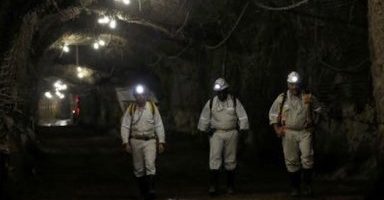This is an excerpt from Ivo Vegter’s report for the IRR which investigates why mining still matters in South Africa notwithstanding the policy issues that make mining unattractive for investment.
South Africa’s mineral resources are the lifeblood of the economy. Without urgent policy interventions to revitalise the mining industry, the country’s entire economy will wither, like a gold rush town fallen into decay.”
So says Ivo Vegter, the author of the IRR’s, most recent report MINING STILL MATTERS: The socio-economic importance of the mining industry, released on 18 March 2019.
The opening paragraphs of the report are set out here to give a sense of this report and why it is so important.
South Africa is the world’s leading producer of platinum, vanadium, vermiculite, manganese and chromium. It is the second largest producer of ilmenite, industrial garnet, palladium, rutile and zirconium. It is also the world’s third largest coal exporter, and a large producer of iron ore. Other significant minerals produced by South Africa include gold, titanium, nickel, antimony, phosphates, rare earth elements, uranium, diamonds, tin and copper.
It is ranked second in Africa and 21st in the world for mineral potential in the Fraser Institute’s most recent survey of mining companies, assuming that its policy regime followed ‘best practices’. This is, perhaps, not surprising when it sits on R35 trillion in mineral reserves, one of the richest non-oil re- source bounties in the world.
South Africa’s policy regime does not follow best practices, however. Uncertainty created by years’ worth of delays in proposed amendments to the Mineral and Petroleum Resources Development Act (MPRDA), which established the state as the custodian of all mineral rights, and by the predatory ambitions and dramatic legal wrangling about the terms of a new Mining Charter for the industry, has hit investment sentiment hard.
This is compounded by widespread perceptions of cronyism, corruption, and inefficient administration of mining licences. Other factors in the socio-political environment also weigh heavily on investors’ feelings towards South Africa’s mining industry.
During the five years from 2013 to 2017, the global perception of the attractiveness of mining policies in South Africa has rapidly eroded. Out of 15 African countries with significant mining industries, it is now the third worst in which to own mining interests, after the Democratic Republic of Congo and Zimbabwe. Worldwide, it is ranked 81st out of 91 countries the Fraser Institute assessed.
Less than 20% of surveyed mining companies believe the level of regulatory uncertainty in South Africa is conducive to, or at least not a deterrent to investment. Only 10 of the surveyed countries fared worse. Even fewer think socio-economic agreements and community development conditions are not a deterrent to investment.
Only 25% consider the taxation regime not to be a deterrent to investment, ranking South Africa fifth from the bottom, ahead only of Guatemala, Bolivia, Ecuador and Venezuela. A similar number feel the same about uncertainty over disputed land claims.
Around 10% consider labour relations and employment law not to be a deterrent to investment, again ranking South Africa fifth worst in the world.
Fewer than 10% of surveyed mining companies think South Africa’s political instability is not a deterrent to investment, ranking it ahead of only Guatemala and Venezuela, and behind Zimbabwe and the Democratic Republic of the Congo.
The only criterion on which South Africa ends in the top half of surveyed countries is the availability of labour and skills.
Thanks to its stellar mineral potential, South Africa’s combined investment attractiveness index re- mains relatively stable, despite the terrible policy regime. Still, it ranks only 48th in the world out of 91 surveyed countries, and fourth in Africa, behind Ghana, Mali and Botswana.
As a result of its unpredictable, uncompetitive and unstable policy environment, however, the South African mining industry shrank even as commodity prices boomed and the rest of the world grew its mining industry by 5% a year on average.
The promulgation of the new Mining Charter by minerals resources minister Gwede Mantashe in September 2018, which included several key revisions, climb-downs and concessions to the industry, is a big step in the direction of restoring certainty and investor confidence.
Much more needs to be done. Turning the negative sentiment around is important not only for the sake of the mining industry and its hundreds of thousands of employees, but also for many towns, cities, and industries that support and depend on mining.
Vegter writes that the report is not intended to examine the policy or investment environment in any detail. Instead, it seeks to place the continuing importance of the mining industry in a broader perspective, outlining its crucial contributions to South Africa’s economy and society, and making some suggestions on how the environment for a successful mining industry might be improved.
The full report can be found here.

